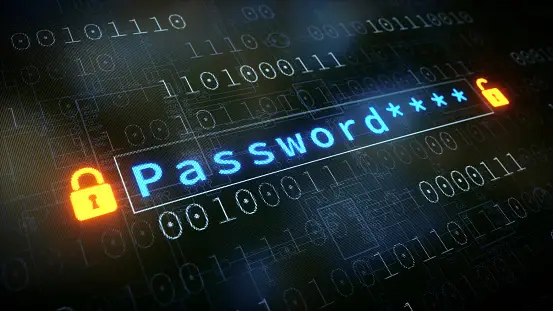
WiFi Password Unlock 2024 Best Application
In a world increasingly dependent on seamless connectivity, the quest for access to Wi-Fi networks has become a necessity. As technology evolves, so do the means to unlock Wi-Fi passwords. The year 2024 will witness an array of applications that promise to open the digital gateways of these networks. Let’s take a look at the landscape of these apps, their features, and key considerations for choosing the best one for your needs.
Wi-Fi password unlocking applications have undergone a metamorphosis, aiming not only to provide access but also to ensure security and user convenience. Key features that define the cream of these applications include strong security measures, user-friendly interface, compatibility across diverse devices and networks, and facility of offline functionality.
Here is a comparative analysis of the top contenders in the Wi-Fi password unlocking applications space in 2024:

App A: SecurifyWiFi
Boasting military-grade encryption, SecurifyWiFi provides a secure environment but lacks compatibility with older devices.
App B: AccessMaster
With its intuitive interface and wide compatibility, AccessMaster stands out, yet it requires a stable Internet connection for optimal performance.
App C: KeyConnect
KeyConnect excels in offline functionality and compatibility but falls short in encryption strength compared to its counterparts.
When choosing the ideal Wi-Fi password unlocking app, several factors come into play. User reviews and ratings, compatibility with your devices and the legality of the app are important. Remember, legality and security are non-negotiable aspects to consider before diving into the sea of these apps.
To ensure ethical use and avoid legal ramifications, users should navigate these apps responsibly. Understanding the legal implications and taking the necessary precautions has become imperative to tread the path of responsible digital citizenship.
Let’s demystify the usage process. Here’s a step-by-step guide to using a WiFi password unlocker app:
1. Downloading and Installing the App
Go to the App Store, download, select the app and follow the installation prompts.
2. Accessing Features
Launch the app, and navigate through its features to find the Wi-Fi unlocking tool.
3. Troubleshooting
Facing a problem? Check out the FAQ or contact customer support for help.
Wi-Fi password unlocking technology has exciting future prospects. Advances in encryption methods, integration with AI, and machine learning shape the landscape of digital connectivity, which promises a promising future.
The impact of these apps goes beyond mere communication. They empower users, and promote access, but also present challenges that require smart solutions. As we navigate this evolving technological field, responsibility, and ethical use must remain at the forefront.

Result
Certainly! When you request the WiFi password, the outcome can vary depending on the method used to retrieve it. If you’re obtaining it from your router’s settings, you’ll typically access a web interface provided by your router’s manufacturer. After logging in, you’ll navigate to the wireless settings section where you can view or change the password. The result of this process is obtaining the password itself, which is usually a combination of alphanumeric characters along with special symbols if allowed.
Alternatively, if you’re seeking the WiFi password from a network administrator or someone who manages the network, the result would be receiving the password from them directly. This could be communicated verbally, provided in written form, or sent electronically.
In some cases, the WiFi password might be printed on a sticker attached to the router itself. If this is the method you’re using to retrieve the password, the result would be finding the password on the sticker, typically listed alongside other important network information such as the network name (SSID) and possibly the router’s default IP address.
Regardless of the method used, the ultimate result of obtaining the WiFi password is gaining access to the wireless network, allowing you to connect your devices and access the internet.
FAQ,s
Certainly! Here’s a comprehensive FAQ about WiFi passwords:
**1. What is a WiFi password?**
– A WiFi password, also known as a network security key or passphrase, is a sequence of characters used to authenticate and secure access to a wireless network.
**2. Why is a WiFi password important?**
– A WiFi password is crucial for preventing unauthorized access to your network. It ensures that only individuals with the correct password can connect to your WiFi, safeguarding your data and privacy.
**3. How do I find my WiFi password?**
– You can usually find your WiFi password:
– Printed on a label attached to your router.
– In the settings of a device already connected to the network.
– By accessing your router’s configuration page through a web browser.
**4. Can I change my WiFi password?**
– Yes, you can change your WiFi password. Access your router’s settings through a web browser, navigate to the wireless settings section, and choose the option to change the password.
**5. What makes a strong WiFi password?**
– A strong WiFi password is typically at least 8 characters long and includes a mix of uppercase and lowercase letters, numbers, and special characters. Avoid using easily guessable phrases or dictionary words.
**6. Can I share my WiFi password?**
– Yes, you can share your WiFi password with trusted individuals. However, exercise caution and avoid sharing it with strangers to maintain the security of your network.
**7. What should I do if I suspect unauthorized access to my WiFi network?**
– If you suspect unauthorized access, change your WiFi password immediately to prevent further unauthorized use. Review your router’s security settings and consider enabling additional measures such as MAC address filtering.
**8. Is it safe to connect to public WiFi networks?**
– Public WiFi networks can pose security risks, as they are often unencrypted and susceptible to eavesdropping. Exercise caution when connecting to public WiFi and consider using a virtual private network (VPN) for added security.
**9. How often should I change my WiFi password?**
– It’s a good practice to change your WiFi password periodically, such as every 6-12 months, to enhance security and prevent unauthorized access.
**10. What if I forget my WiFi password?**
– If you forget your WiFi password, you can usually retrieve it by accessing your router’s settings or resetting the router to its factory defaults (note: this will require reconfiguring your network settings).
By understanding these common questions about WiFi passwords, you can better manage and secure your wireless network.




